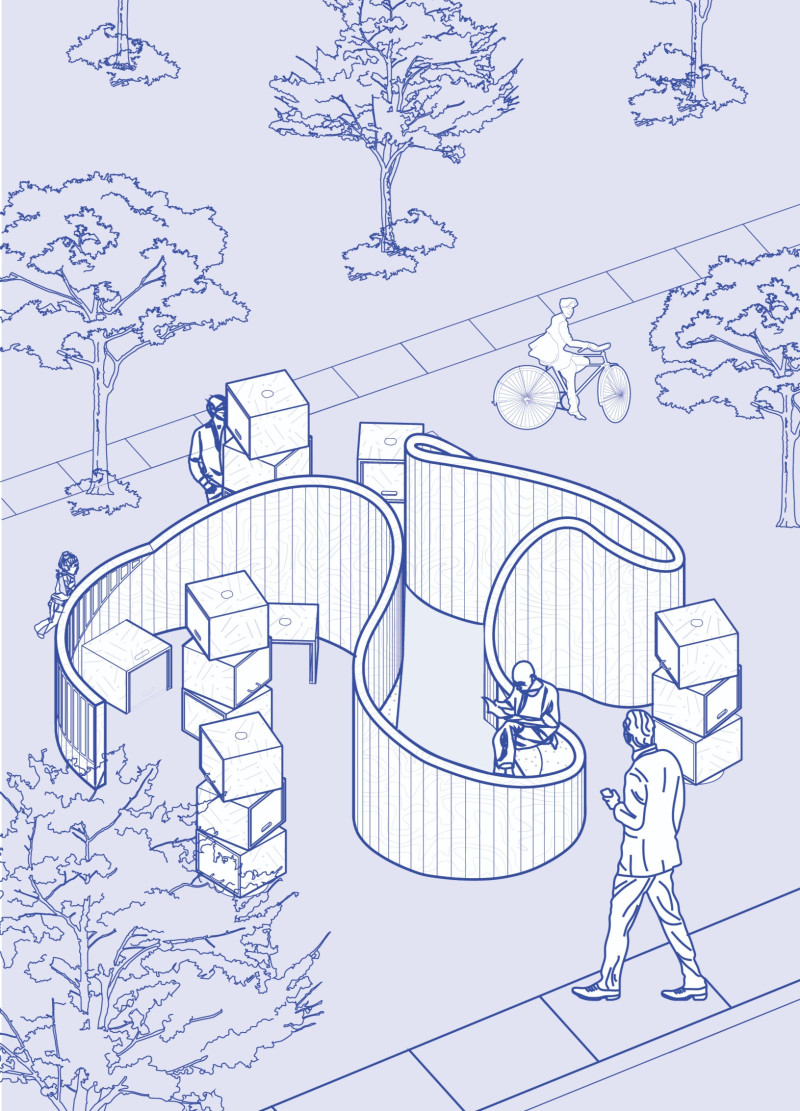5 key facts about this project
The portable reading room is designed to engage with communities and adapt to their specific needs. Located in both urban and rural areas, the reading room serves as a space for reading and community interaction. With a focus on modularity, the design allows for flexibility and customization, ensuring that it meets the diverse requirements of various neighborhoods.
Modular Framework
The reading room features a modular design where each pillar can accommodate up to three different modules. These modules provide several functions, such as shelving books, offering seating, and displaying community information. This system allows users to adjust the space according to their preferences and activities, which enhances the overall experience.
Logistics and Sustainability
Efficient logistics are an important part of the design. The modules are built to fit into wooden crates for shipping, optimizing space and reducing transport-related fossil fuel use. By considering these factors, the design incorporates sustainability, aligning with modern practices that prioritize environmental responsibility.
Interactive Community Elements
A unique aspect of the reading room is its interactive component, which invites community members and local artists to contribute to the design. The modules are created with blank surfaces meant for decorations, allowing the space to reflect the community’s identity and character. This involvement helps to foster a connection between the users and the reading room.
The assembly of the reading room is straightforward, requiring no tools for setup. This simplicity lowers barriers to engagement, allowing installation to take about one hour. The design includes curving walls that create different spatial configurations, offering both areas for public interaction and private reflection.
Wooden crates are a key element, serving both logistical and functional purposes. This attention to detail showcases the reading room's focus on adaptability and community engagement. The space is designed for individuals to connect with literature and one another, celebrating the shared identity of the community.





















































